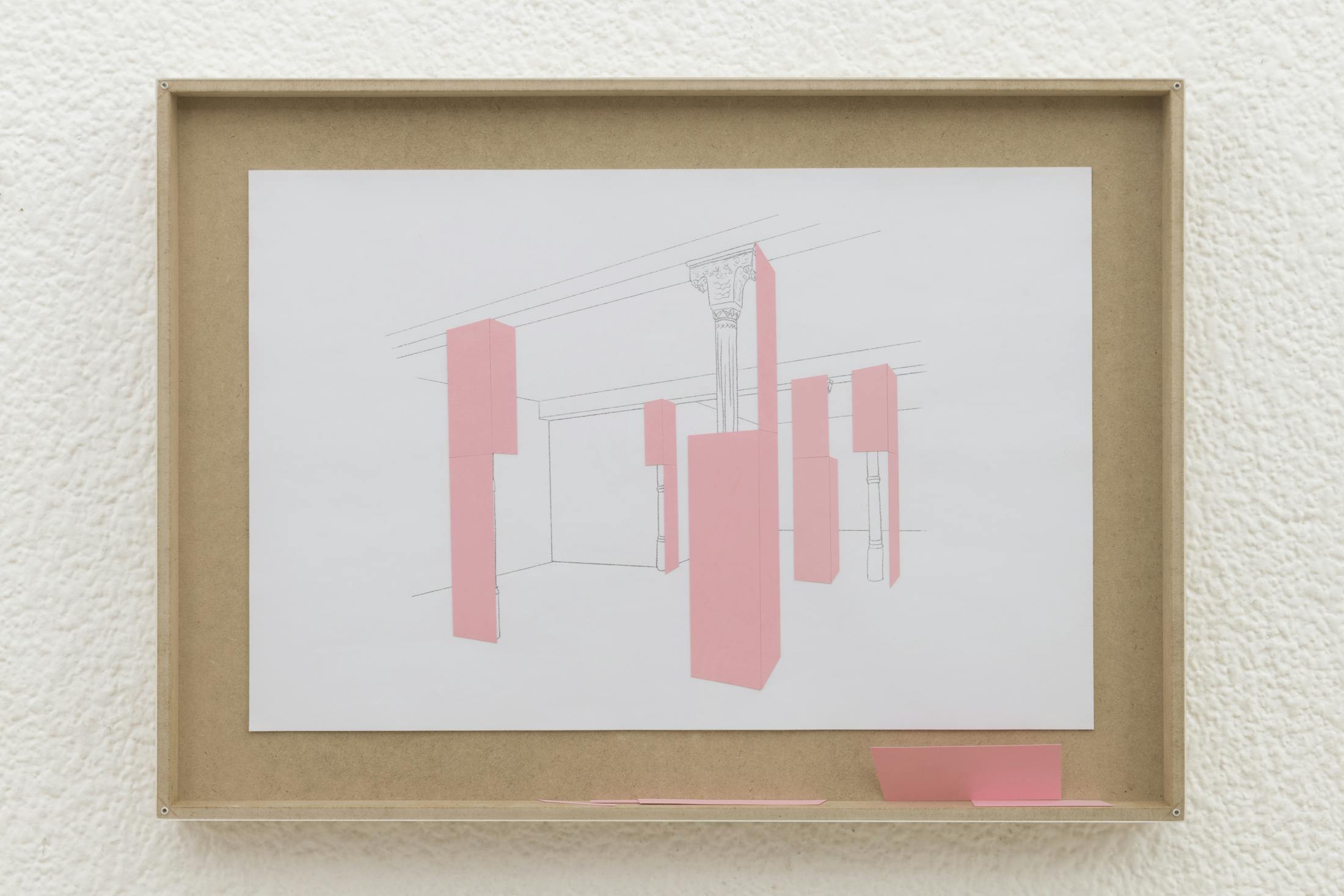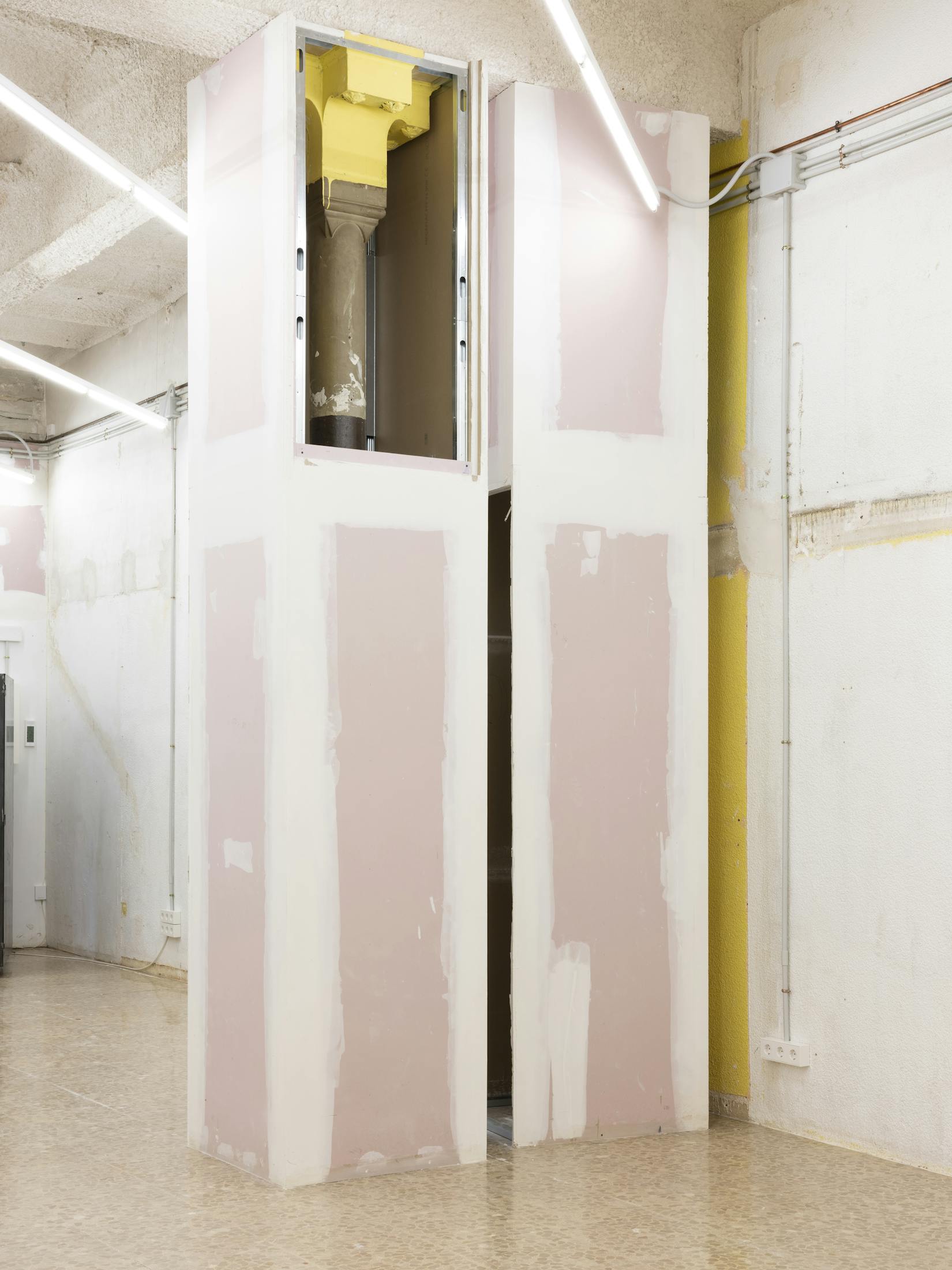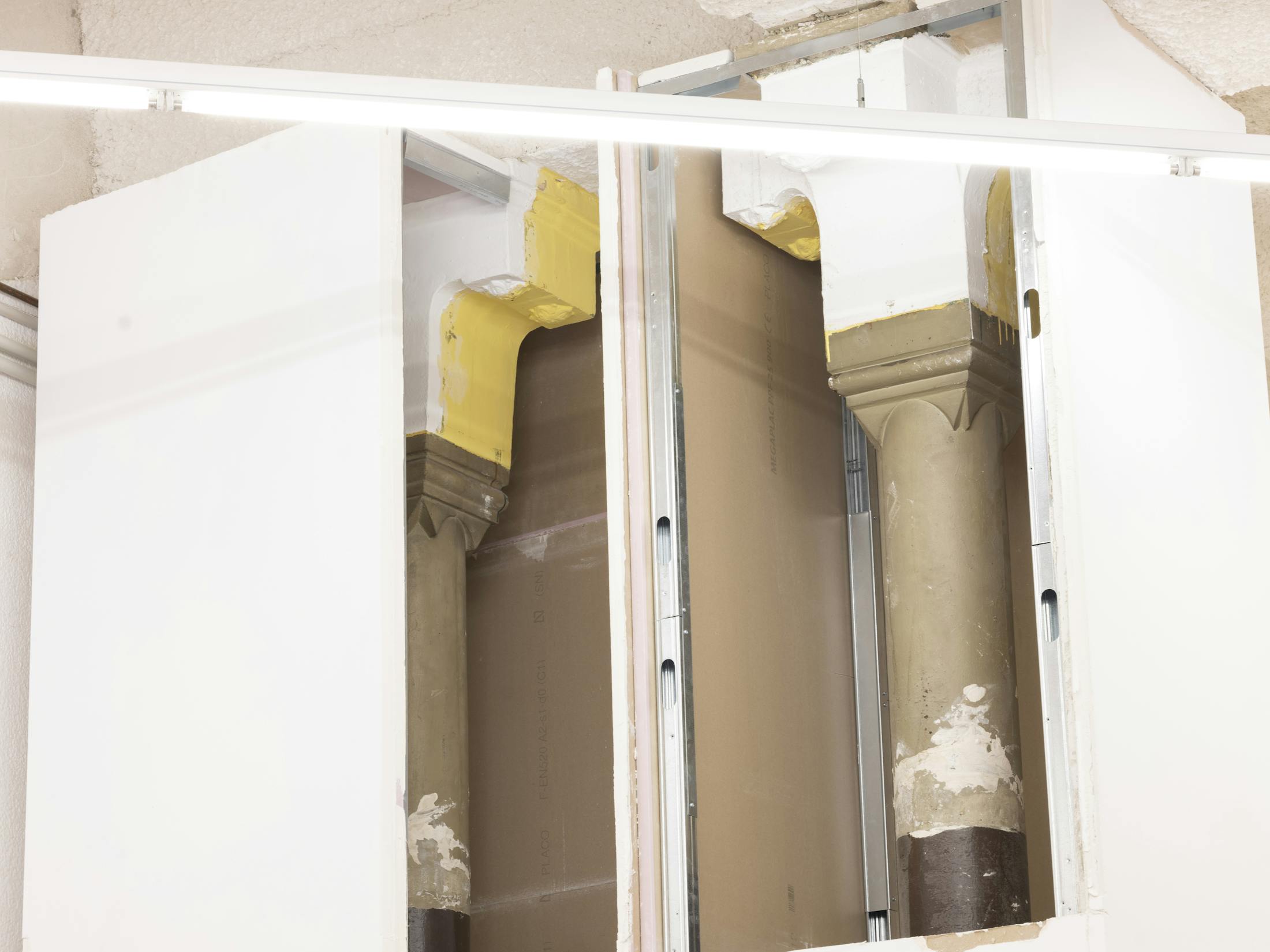Reconstructing, converting and illegalizing space
Texte by Moritz Küng
Exposing the Columns was Luz Broto’s contribution for Space, the inaugural group exhibition at Dilalica, a gallery located in Barcelona’s “Soho district” near the Arc de Triomf. The architecture firm MAIO converted a former retail space using modest means and original interventions. Their renovation was designed to create a specific site to house unconventional exhibitions – in their words, “not a generic white envelope [meaning the white cube], but a space that retains traces and memory of the site’s previous incarnation, but without treating the existing elements in a precious way.” Apart from removing a built-in mezzanine and staircase leading to it, improving the air conditioning and lighting (the latter with its own formal logic based on a diagonal suspended fluorescent tube system), designing furniture, and adding a large mirrored wall at the rear to hide a storage/toilet space, the gallery remained “untouched” and the wall surfaces just as they were found.
However, due to landmarking and security regulations, the five existing cast iron columns required extreme fire protection. In order to comply with the legal requirements, the architects proposed three solutions: installing a sprinkler system (deemed too expensive), applying shotcrete to the iron columns to match the ceiling (too aggressive and irreversible), or covering them with impregnated gypsum board (the implemented solution). The cladding was left in its original nude pink, and all of the square columns have similar dimensions although some are at a slight angle, a feature that the architects designed to increase the uniqueness of the new space and the gallery’s trademark identity.
The moment Luz Broto (Barcelona, 1982) knew about these protected, encapsulated columns, she wanted to work around their discovery. In an act of “liberating” them, she developed a scenario of four “activations” which would partially uncover the “caged” columns and make them reappear for a given period of time (between 24 hours and 30 days), according to a contract drawn up between the artist, the gallery, and the collector. Each activation triggers the removal of a series of plasterboard panels, creating ten openings in the columns’ cladding. The openings are distributed over various parts of the gallery’s five columns, according to the artist’s instructions specified in the contract annex. Once an activation has ended, the open holes of the columns are cladded with new impregnated gypsum boards, to once again comply with the fire safety regulations.
Following the fourth and final activation –whenever it is realized– all the different fragments defined by Broto (almost 80 boards) would be replaced by new ones, all the parts of the columns would have been discovered and the artist’s “occupation” would end. To date, Exposing he Columns has only been activated once over the course of eight days, during September 2019, through a purchase agreement with a private collector. Now, the City of Barcelona has acquired the second activation, and the work is on view again at Dilalica from February 10 to March 5, 2022. Clearly, Broto’s activations extend far beyond the original time frame of the opening exhibition, and this element raises complex questions about the nature of her artwork.
The manual of specifications, the drawing, the cutout panels and the contract –those elements that seemingly embody the physical aspects of the artwork– are in my view just props and vestiges; or to put it another way: placeholders or substitutes for the actual “work” which remains immaterial. That said, what is the actual “work” of Luz Broto?
Since her very first action, titled Occupy the Entire Space on a Public Holiday… (Bar La Piola, Madrid, January 7, 2007), a five-minute-long happening conceived to test, in a non-standard way, the maximum official capacity of a public venue, Luz Broto has realized thirty-six interventions, all of them specially conceived for a specific occasion or situation. The titles may give us a clue, and obviously emphasize how the artist employs scripts and instructions particular to a given context or space in circumstances that often imply engaging with others. And when Broto involves many people in a collective process to establish her work – in the case of Exposing the Columns: the architects who approved the intervention; the gallery owner who agreed to risk closure should a fire safety inspector show up; the collector who activates the work; the lawyer who drew up the contract; the workers who manipulate the coverings on the columns – the artwork (the investigation and process) is ephemeral and serves to provoke an experience that raises awareness of a given situation. However in this case, the “work” is “the act of seeing” in itself.
Broto’s working method typically involves a huge amount of INPUT and mobilization that results in a minimal, spare OUTPUT or resulting narrative. This can be compared to a butterfly effect, the idea that small changes can have nonlinear effects on a complex system. Or to use the words of Dr. Ian Malcolm (AKA Jeff Goldblum in the movie Jurassic Park): “A butterfly can flap its wings in Peking, and in Central Park, you get rain instead of sunshine.”























